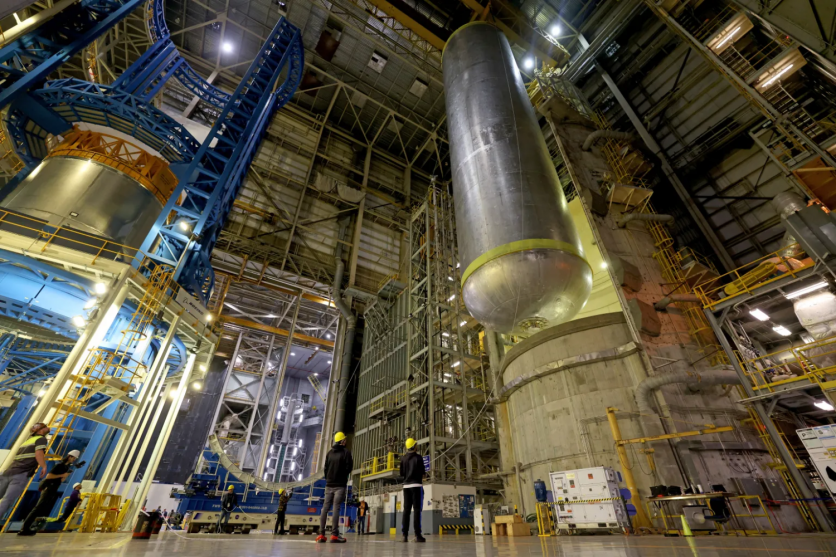NASA has provided a glimpse into the rocket propellant tanks that will play a crucial role in the journey of the Artemis III mission.
The Space Launch System (SLS) rocket, responsible for launching astronauts, is a crucial component of NASA's Artemis campaign, aiming to return humans to the moon's surface.
Following the completion of welding on the liquid oxygen tank, the primary structures forming the core stage for the SLS rocket are now prepared for further outfitting.
These components will be integral to the Artemis III mission and were recently finalized by technicians inside NASA's Michoud Assembly Facility in New Orleans.

Priming the Tank
The liquid hydrogen tank, another significant propellant tank for the mega-rocket, has already undergone full welding. NASA and Boeing are also priming the tank within the Vertical Assembly Building area.
The manufacturing process involves multiple steps, including welding, washing, and subsequent hardware outfitting. Internal cleaning procedures, similar to a thorough shower, are conducted to prevent contaminants from compromising the stage's propulsion and engine systems.
Subsequently, primer is applied to the tank's external sections, followed by the installation of a foam-based thermal protection system to safeguard against extreme temperatures during launch and flight, according to NASA.
Chad Bryant, acting manager of the Stages Office for NASA's SLS Program, emphasized the simultaneous processing of major hardware elements at Michoud to support the Artemis campaign.
With the Artemis II core stage nearing completion, Bryant affirmed that production of the major structural elements for the Artemis III mission is progressing on schedule.
Read Also : NASA Wraps Up 1st Phase of Ambitious Project That Aims to Put a Nuclear Fission Reactor on the Moon
Super-Chilled Propellant
The propellant tanks contain a significant amount of super-chilled propellant, vital for fueling the four RS-25 engines. NASA noted that it is imperative to keep this propellant at ultra-low temperatures to maintain its liquefied state.
With the core stage powered by the RS-25 engines, the rocket will produce an impressive two million pounds of thrust, enabling the launch of NASA's Orion spacecraft, astronauts, and cargo beyond Earth's orbit, aiming for the lunar surface during Artemis III.
Through the Artemis program, NASA aims to send astronauts, including the first woman, the first person of color, and the first international partner astronaut, to explore the moon. Objectives of scientific discovery, economic benefits, and the establishment of a foundation for future crewed missions to Mars drive this endeavor.
The SLS rocket represents a critical component of NASA's deep space exploration infrastructure, complementing other elements such as the Orion spacecraft, exploration ground systems, advanced spacesuits and rovers, Gateway, and human landing systems.

ⓒ 2025 TECHTIMES.com All rights reserved. Do not reproduce without permission.


![Best Gaming Mouse For Gamers With Smaller Hands [2025]](https://d.techtimes.com/en/full/461466/best-gaming-mouse-gamers-smaller-hands-2025.png?w=184&h=103&f=6fd057ef777bd39251d4e7e82e9b23f1)

